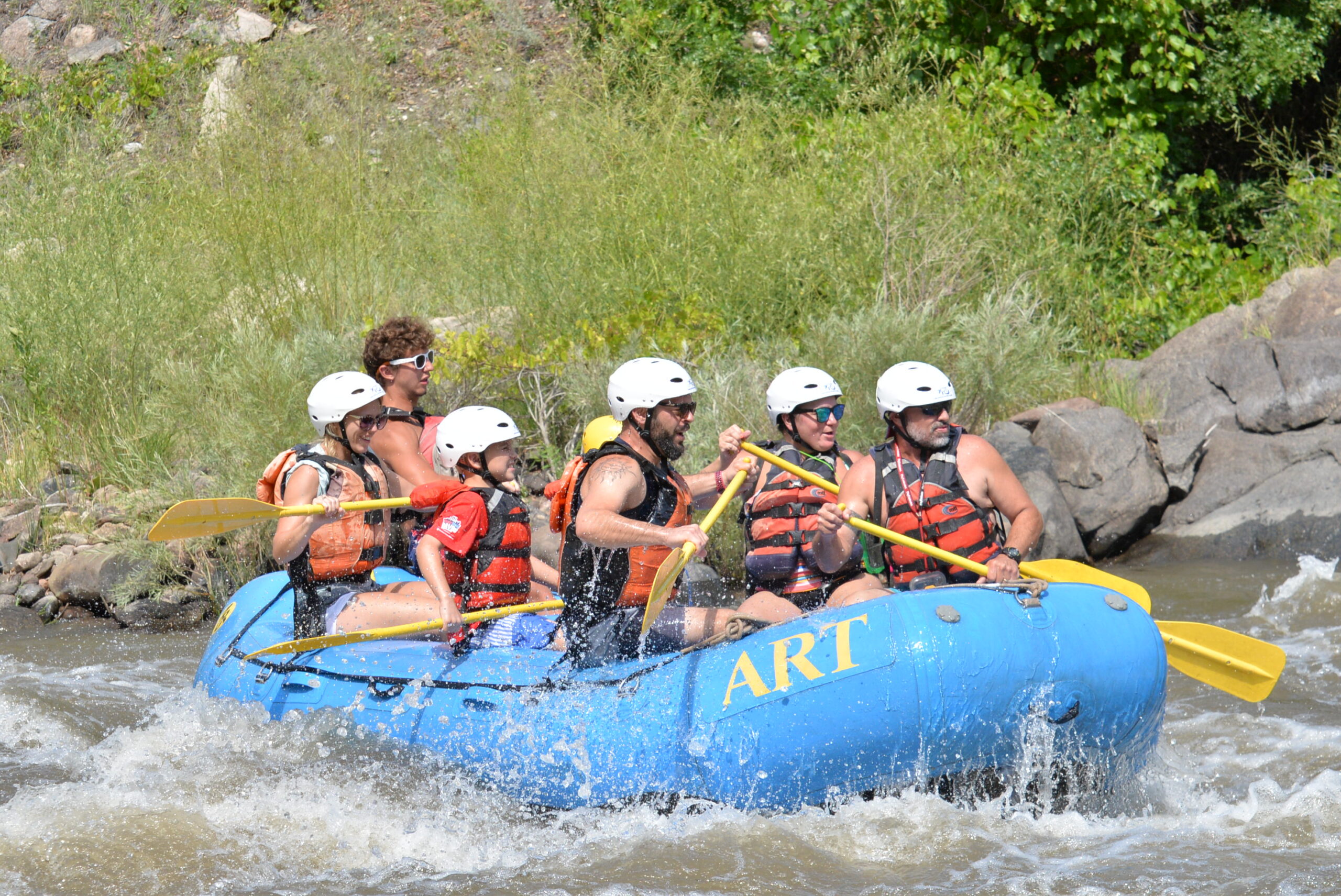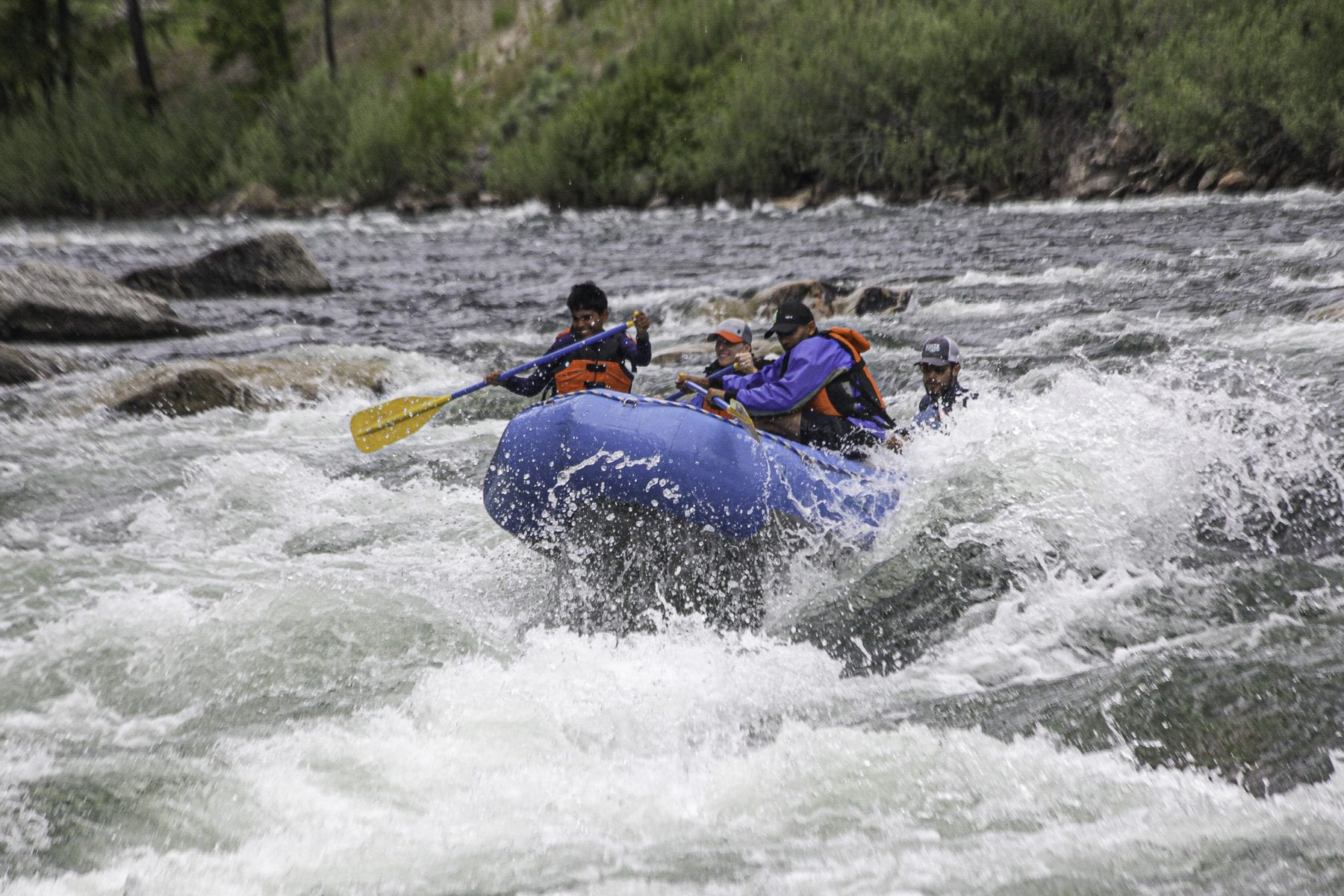Crucial Abilities for Water Rafting
Mastering the art of water rafting requires a combination of precise skills and understanding to browse the unforeseeable currents of rivers, making it a thrilling yet possibly unsafe task. As enthusiasts prepare to start their following experience, it is crucial to furnish oneself with vital expertises that surpass just paddling. From comprehending the complexities of river characteristics to swiftwater rescue techniques and seamless group communication, the journey down the river requires a mix of experience and adaptability. With safety and security procedures working as a keystone, participants are encountered with a complex difficulty that necessitates a precise approach and unwavering focus.
Paddling Strategies
Grasping effective paddling strategies is critical for browsing water boatings safely and successfully. One essential strategy is the forward stroke, where paddlers dip the blade fully into the water and pull it back along with the boating to create propulsion.
In addition to the forward stroke, the draw stroke is important for making quick modifications or drawing the raft closer to an item. By positioning the paddle blade perpendicular to the water's surface area and pulling the water towards the plethora, paddlers can properly transform the vessel's direction. The backstroke offers as a useful tool for backing up or slowing down the boating when essential.
River Reading
Effective paddling techniques, such as the forward stroke and attract stroke, play an essential function in browsing and interpreting river currents, a skill known as river analysis. River analysis involves the ability to examine the speed, depth, and instructions of the water circulation to make enlightened choices while navigating rapids. By recognizing how the water relocates around barriers and via different networks, rafters can choose the most effective route to securely pass through the river.
One trick aspect of river analysis is acknowledging numerous kinds of currents, consisting of hydraulics, waves, and eddies, and recognizing exactly how they can impact the raft. Eddies, for example, are areas where the water moves in a circular motion, usually providing possibilities for rest or calculated maneuvers. Waves can indicate the visibility of challenges or rocks, needing quick adjustments in paddling technique. Hydraulics, commonly called "holes," are areas where water recirculates back upstream, posing potential hazards to boatings.
Understanding the skill of river reading is vital for enjoyable and secure rafting experiences, enabling paddlers to browse difficult waters with confidence and precision.

Swiftwater Rescue
Comprehending swiftwater rescue strategies is vital for water rafting fanatics to react successfully in emergency situations on fast-flowing rivers. Swiftwater rescue includes a collection of specialized abilities and expertise focused on securely extracting people from swift-moving water. One crucial aspect of swiftwater rescue is identifying the dangers existing in fast-flowing rivers, such as filters, undercut rocks, and strong currents, to intend and carry out successful rescue operations.
Proper tools is crucial for swiftwater rescue, including toss bags, rescue ropes, safety helmets, and individual flotation protection tools. Rafting lovers have to be proficient at utilizing this tools in high-stress scenarios to make certain the security of themselves and others. Additionally, swiftwater rescue methods commonly involve teamwork and coordination amongst rafters to carry out complex rescue maneuvers properly.
Educating in swiftwater rescue is highly recommended for people engaging in water rafting activities, as it equips them with the essential abilities to handle emergencies swiftly and effectively. White Water Rafting Colorado. By practicing and recognizing swiftwater rescue techniques, water rafting lovers can enhance their security which of their fellow rafters on challenging river expeditions
Team Communication
Reliable synergy in water rafting counts greatly on seamless interaction amongst employee to guarantee coordinated and safe navigation via challenging river problems. Clear and concise communication is important for the success of any type of rafting exploration. Team members must have the ability to efficiently convey important info such as paddling commands, warning signals, and navigational instructions.
In the hectic and typically unforeseeable setting of river rafting, exact and timely communication can mean the distinction between a potential calamity and an effective run - White Water Rafting Colorado. Each group member plays an essential role in the general interaction procedure, whether it be listening diligently to my explanation the guide's directions, relaying details to other paddlers, or signaling for support when needed
Developing a typical language and interaction system prior to hitting the water is vital. This ensures that everybody gets on the exact same page and understands exactly how to interact successfully during the rafting journey. By promoting a society of open communication and shared respect, rafting groups can improve their performance and safety on the river.

Safety And Security Methods
In the context of water rafting, the structure of group interaction established during expeditions is additional reinforced with rigid adherence to safety methods. Security methods are vital in ensuring the well-being of both rafters and overviews throughout water rafting expeditions. One crucial safety method is the correct wearing of personal flotation protection devices (PFDs) by every individual on the plethora. PFDs are vital in emergency situations to keep individuals afloat and supply buoyancy. Furthermore, rafters need to be skilled in swiftwater rescue strategies and methods in instance of somebody dropping too far or if the raft more tips here tips over.
Another key safety and security protocol is the thorough rundown offered by guides prior to getting directory started on a rafting trip. This briefing generally includes info on paddling strategies, what to do in situation of numerous emergency situations, and signals used for interaction throughout the trip. Moreover, it is important to have marked safety kayakers coming with the group to give instant support if required. By strictly sticking to these safety protocols, water rafting tours can be both awesome and risk-free for all individuals entailed.
Verdict
Finally, understanding vital skills for water rafting is crucial for a secure and delightful experience on the river. Paddling methods, river analysis, swiftwater rescue, group communication, and safety and security protocols are all important components that add to an effective rafting journey. By refining these abilities, rafters can browse tough waters with self-confidence and make certain the security of themselves and their employee.
Mastering the art of water rafting calls for a mix of specific skills and expertise to browse the uncertain currents of rivers, making it a thrilling yet potentially hazardous task. By placing the paddle blade perpendicular to the water's surface and pulling the water towards the boating, paddlers can properly change the vessel's instructions.Understanding swiftwater rescue strategies is important for water rafting lovers to respond effectively in emergency situations on fast-flowing rivers.Reliable team effort in water rafting counts greatly on seamless communication among team participants to make sure collaborated and safe navigation with tough river conditions.In conclusion, mastering essential skills for water rafting is crucial for a enjoyable and secure experience on the river.